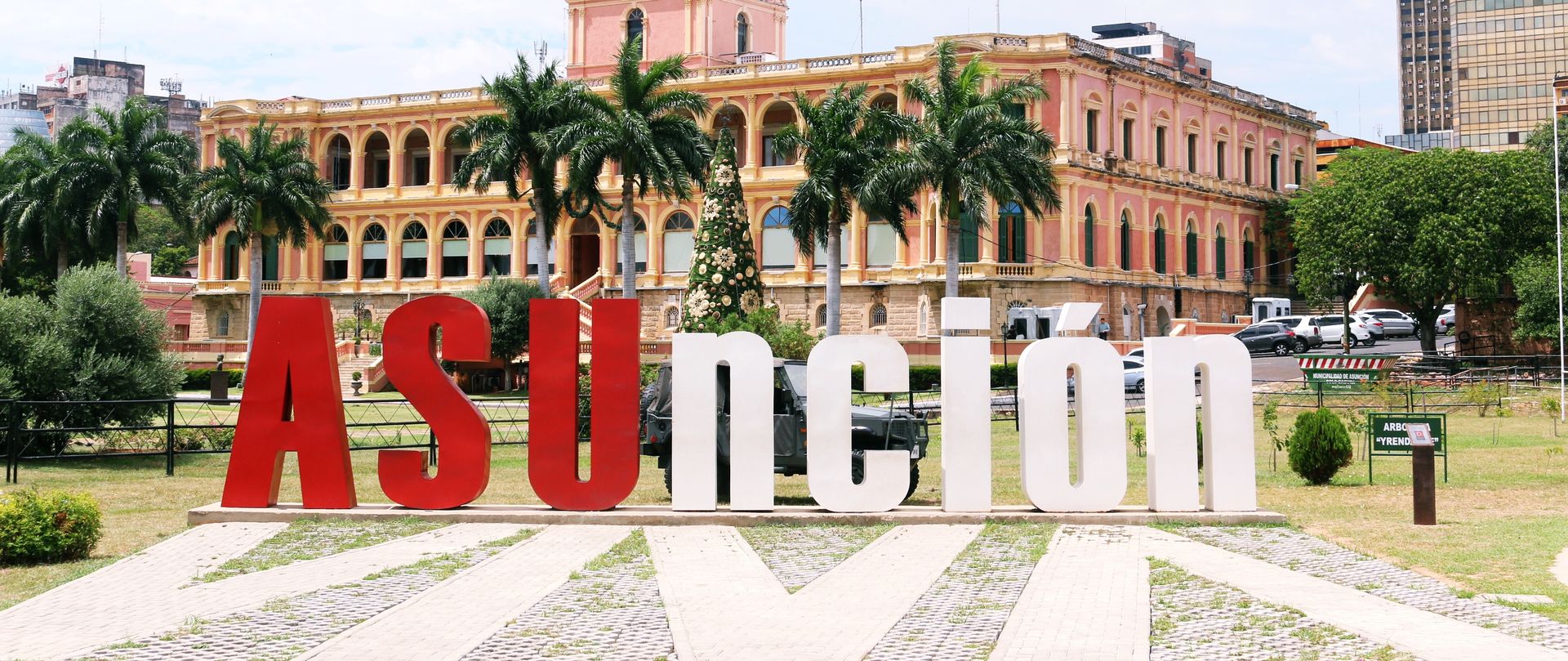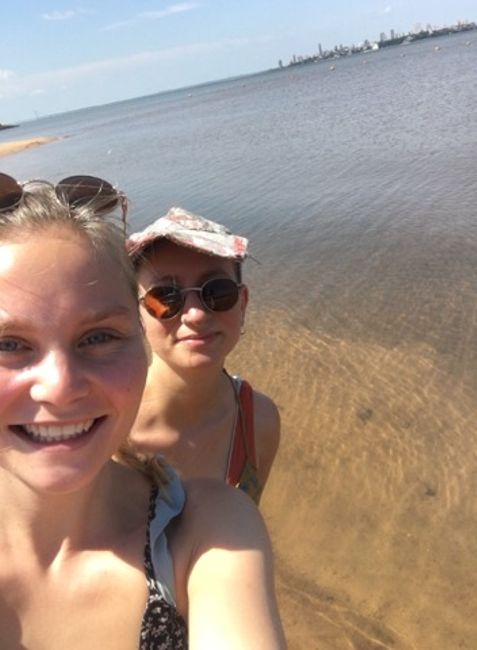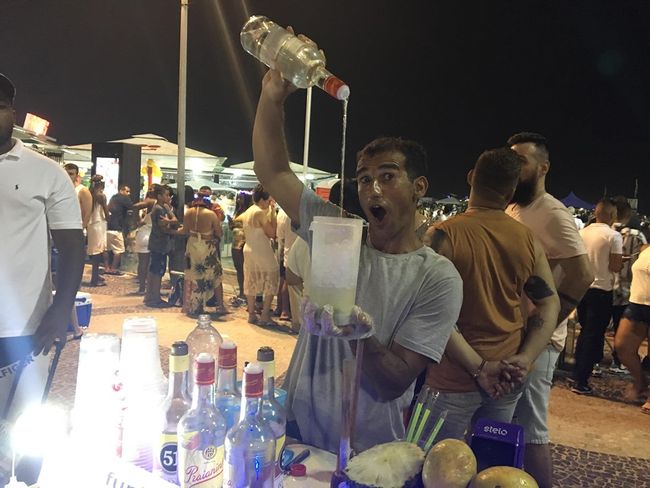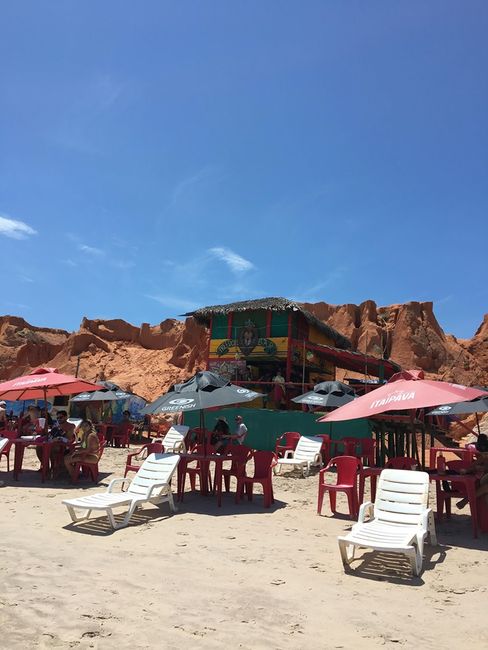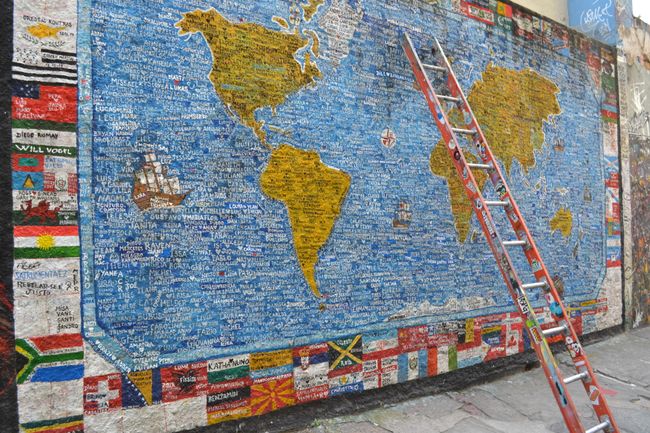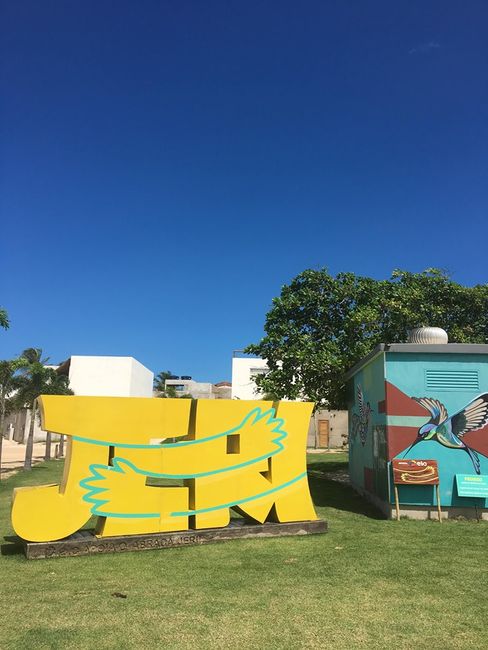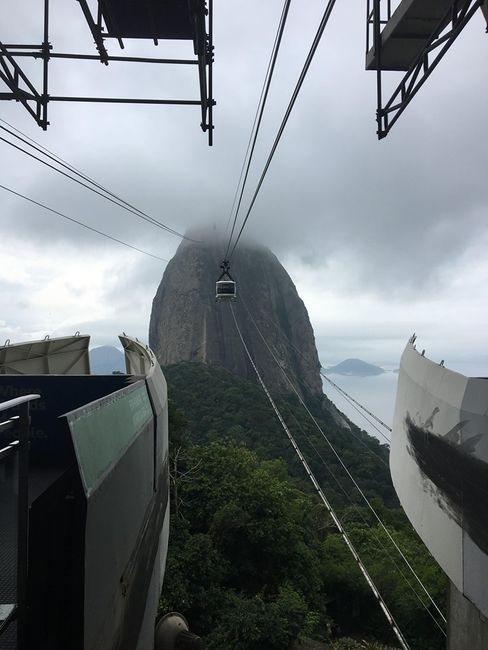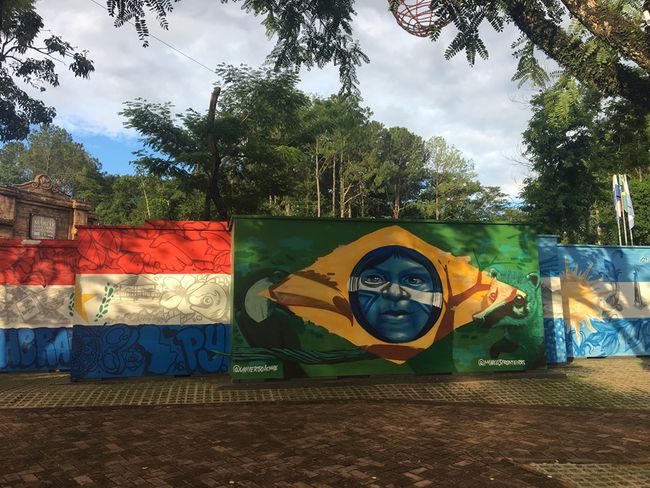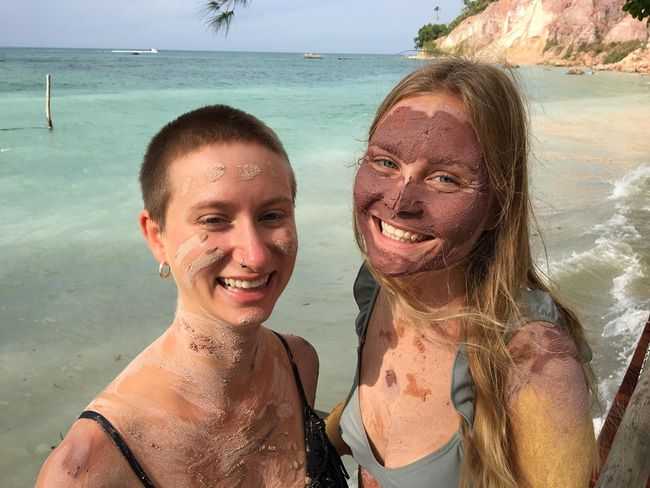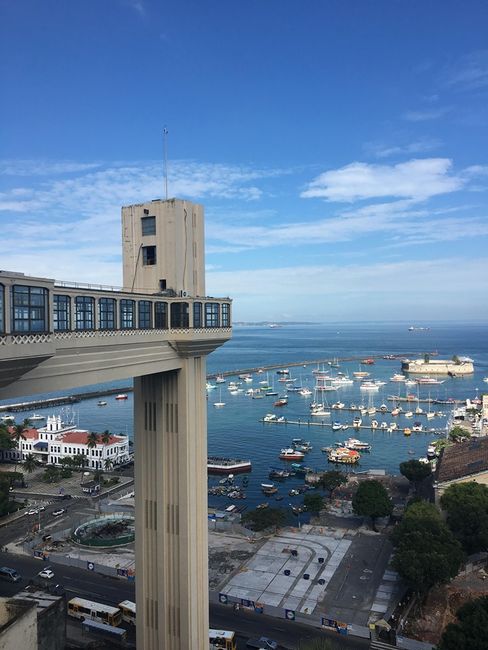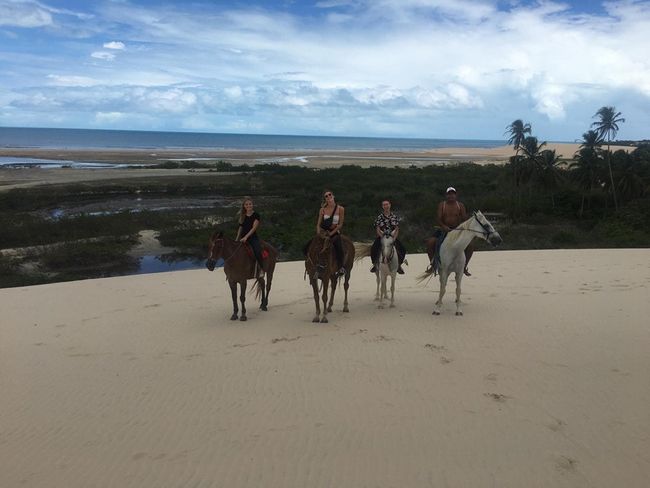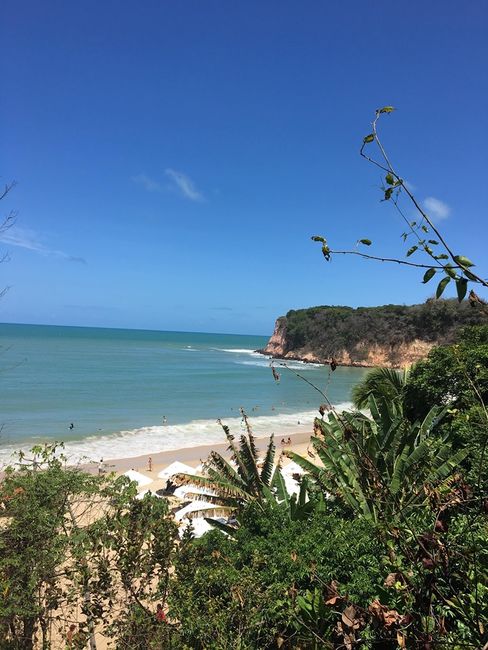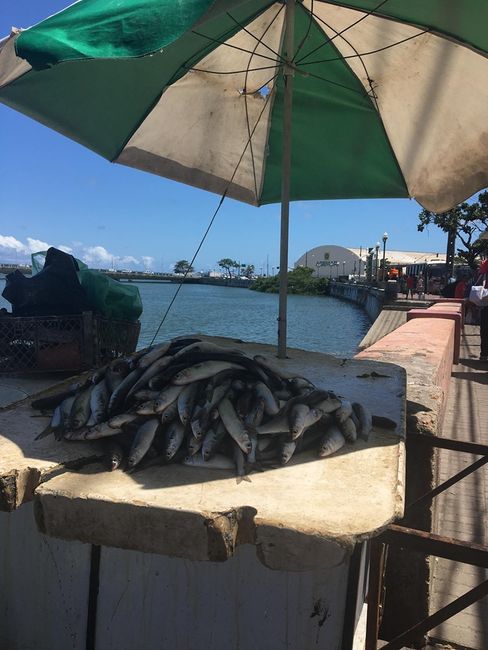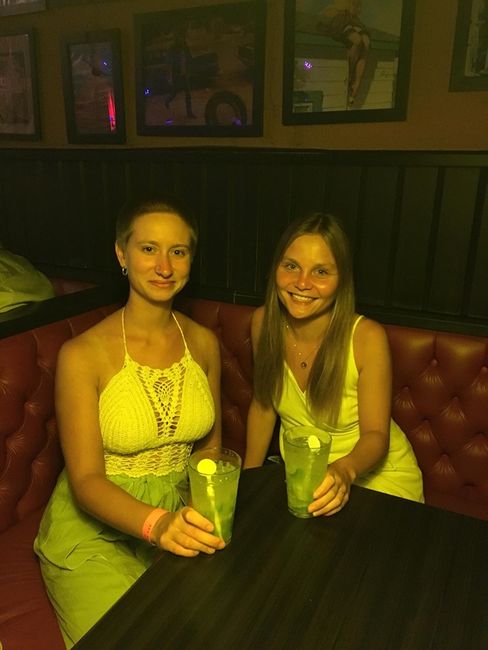Backpacking between Portuñol and Porteño (Marie)
የታተመ: 21.02.2020
After hearing a lot about the culture and nature of Brazil from our colleagues at work, we decided in December to ask our boss here at 'Pastoral Social' if we could have a few weeks off to travel. In the end, we got the whole month of January off, which of course made us very happy. So our journey began at the end of December on a bus heading towards São Paulo. Arriving after about 24 hours, we celebrated my birthday and after just one night, we continued on to one of our most anticipated destinations, Rio de Janeiro. In addition to the usual tourist attractions such as Sugarloaf Mountain and the Christ the Redeemer statue, we got to experience something very special here: the New Year's Eve celebration at Copacabana Beach. On December 31st, we had to go shopping because of the festivities. Besides the fact that in Rio, due to the height of summer during the new year, people are usually lightly dressed, there are also some traditions that must be followed when it comes to the New Year's Eve outfit: the most important is that the 'outer clothing' should be white. This color represents peace in the new year. Equally significant is the color of the underwear. In addition to the well-known peaceful white, it is important to wear yellow for a growing bank account, red and pink represent a happy and eventful love life from New Year's Day onwards, and green brings hope after New Year's Eve. In addition to the dress code, it is also customary to eat twelve grapes at midnight, one for each month and hour, and to jump on the right leg to start the new year on a good note. Since we couldn't find any grapes, we bought a bottle of white wine as our New Year's Eve drink, then jumped with our right leg over the waves at Copacabana and went swimming in the sea afterwards. We would like to bring some of these customs back to Germany, but we would need to find a solution for the changed climatic conditions in the northern hemisphere. From Rio, our journey continued along the northeast coast of Brazil. We were fortunate to see beautiful beaches, meet very nice people from all over the world, and learn a lot about Brazilian culture, especially about the diversity of Carnival in January. In Brazil, Carnival is already in full swing this month with pre-Carnival parades and various other events. However, on our journey through the largest Latin American country, we sometimes encountered small communication problems. In Brazil, most people speak only Portuguese, so communication, at least at the beginning, mostly consisted of gestures and sounds. After some time, we got to know 'Portuñol'. A kind of Portuguese-sounding Spanish and Spanish-sounding Portuguese that Brazilians use to navigate in a Latin America full of Spanish-speaking countries. And with this communication aid, we managed to reach the impressive Iguazú Falls at the Brazil-Argentina-Paraguay tri-border area, from where we returned to Asunción. Upon arrival, we didn't really have much to do because since January is the main vacation and travel season in Paraguay, it had not been clarified where we would work after our long absence. So we sat down with our coordinator, Ricardo, and expressed our desire to work in the largest trauma hospital in the country during the last weeks in Paraguay. However, since there were still some things that needed to be organized for our final assignment and that would take some time, we decided to use this week for a trip to Argentina. Because during our time in Brazil, it felt like we had met half of Argentina's population on vacation, so we wanted to visit the country of tango, at least briefly. So our second journey began after just four days in Asunción, taking a twenty-hour bus ride to Buenos Aires. We were immediately fascinated by the city on the Rio de la Plata, with its many colorful neighborhoods, such as the 'Palermo' district with its many bars or the neighborhood of football, which plays a big role in Argentina and is called 'La Boca'. One of the most interesting things about Buenos Aires, and indeed all of Argentina, was the country's Spanish accent. Generally, Spanish in Argentina is more melodic and sounds very musical. Many 'sh' sounds make the language sound somewhat softer. So one could rather get the impression of being in a Spanish-speaking Italy, which also makes sense when one learns that many Argentinians have Italian roots. We mostly received lessons in language and other interesting information about Argentina and Buenos Aires while using Uber, from local Buenos Aires residents known as 'Porteños'. The name comes from the Spanish word 'Puerto', which means port. And since Buenos Aires, located on the Rio de la Plata, is one of the most important ports in Argentina, it was easy for us to understand this nickname. After a two-day trip to Córdoba, where we visited friends we had met in Brazil, we finally headed back to Paraguay. And after a short orientation day, we started working at the 'Hospital de trauma'.
መልስ
